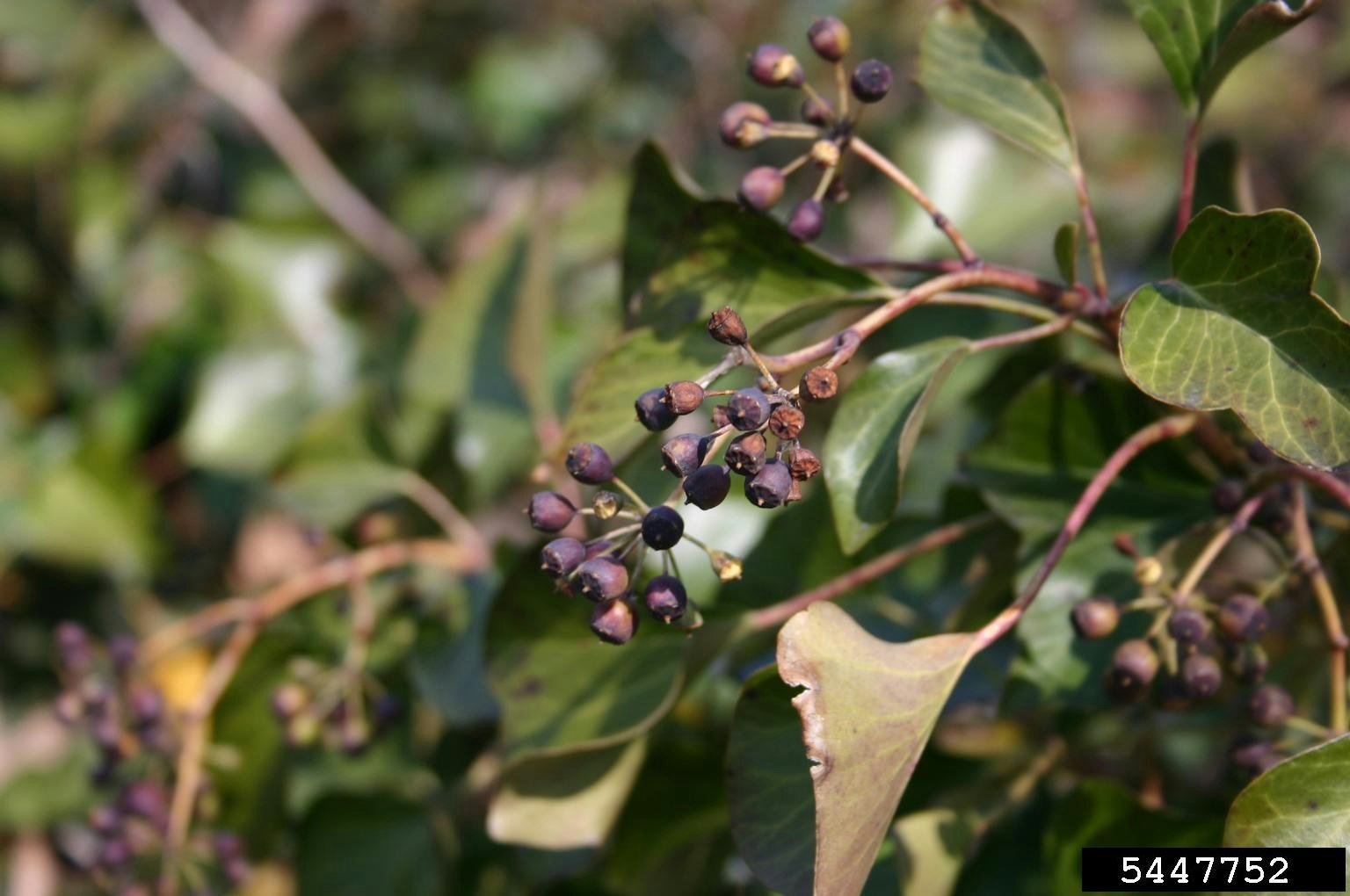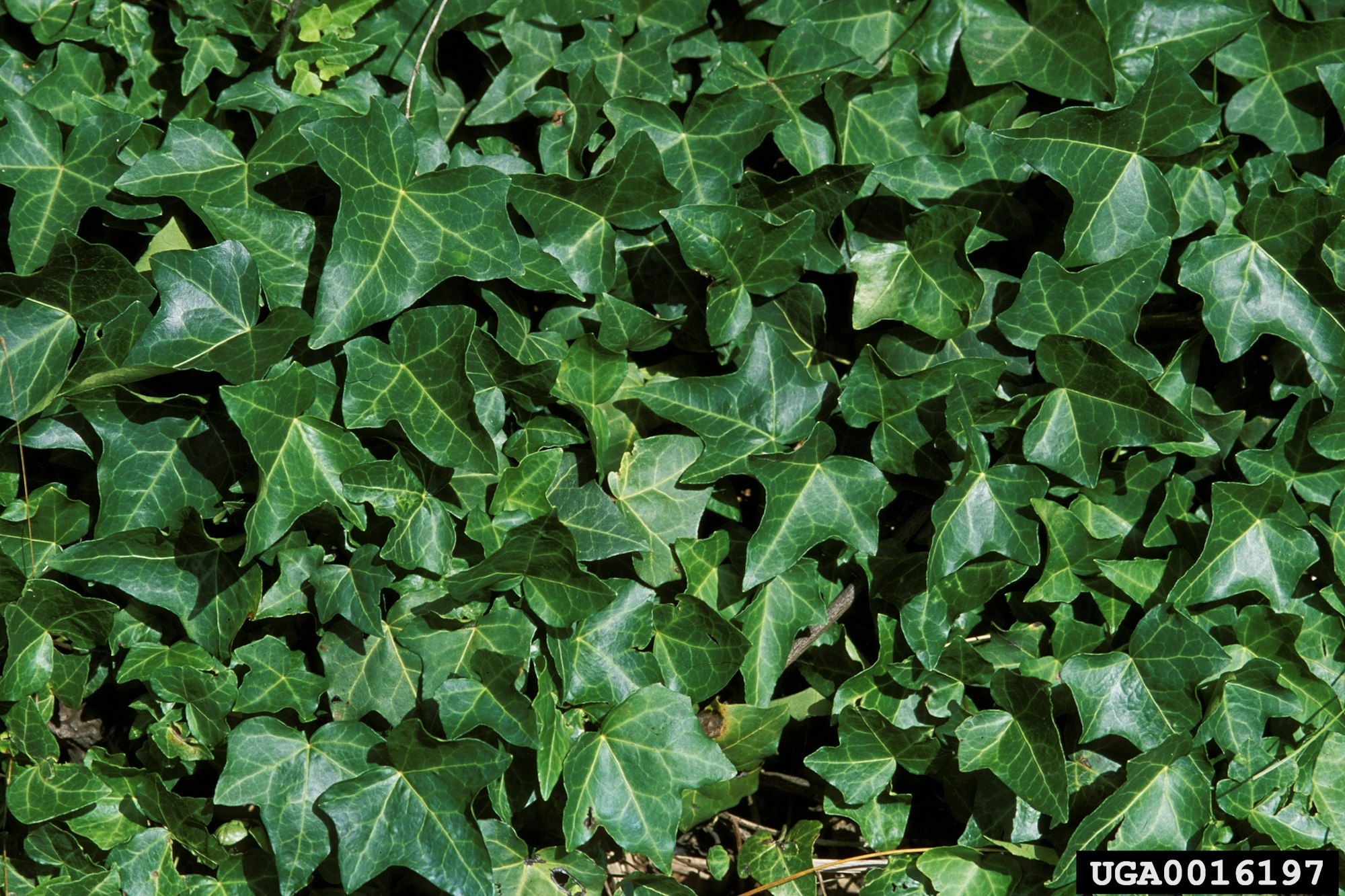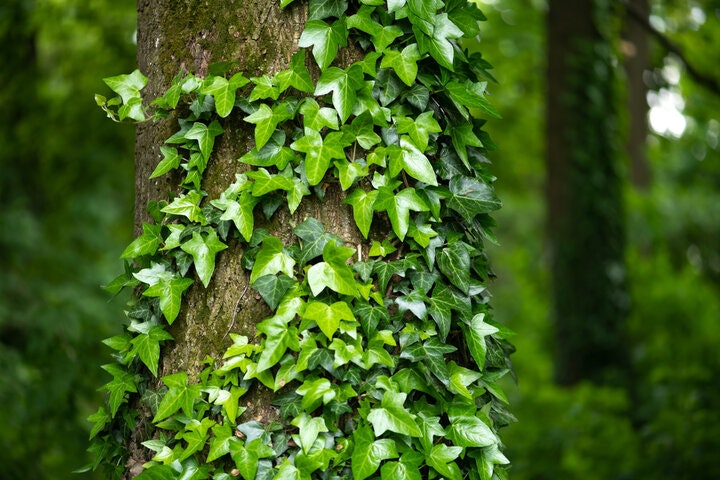IVY
(Hedera helix)
Other common names: Common ivy, branching ivy, glacier ivy, needlepoint ivy, sweetheart ivy, ivy
Weed Class/Rating: “B” Rated weed by ODA. “A weed of economic importance which is regionally abundant, but may have limited distribution in some counties”
Family: Araliaceae Juss. - Ginseng family
Lifecycle: Perennial
Leaves: Alternate and waxy leaves. Starting out lobed, the leaves become larger as they mature and pointed with no lobes.
Flowers: When light and nutrients are optimum as in forest canopies, green or white flowers are produced forming black berries that are relished by starlings and robins, their main dispersal agents.
Stems: Thick, woody, evergreen vines when growing on trees. Smaller long, trailing stems when growing on forest floors.
Dispersion: Seeds are spread by birds. The bird’s digestive tract helps scarify seeds, which improves germination.
Seeds: One to three stonelike seeds form within the berry-like fruit
Impacts: Ivy chokes out trees and woody ornamentals with its rapid and massive vegetative growth. It can also displace native vegetation on the forest floor. Ivy frequently becomes intertwined with forest shrubs creating difficulties for manual removal or herbicide use. Removal costs in some Oregon parks have reached $3,000 per acre.
Toxicity: Ivy leaves are somewhat toxic to herbivores.
English ivy (Hedera helix) is a highly invasive vine originally from Europe and Asia, commonly used as an ornamental groundcover. It spreads rapidly in forests across the Pacific Northwest, smothering native plants and trees, leading to reduced biodiversity and tree damage. Ivy's dense growth can weaken trees, making them vulnerable to wind damage, while its shallow roots contribute to erosion. Controlling ivy requires persistent manual removal or chemical treatments. Despite its ornamental appeal, ivy poses significant ecological threats, particularly in urban forests.


















IF SEEN:
English ivy can be controlled or eradicated by mechanical and chemical methods or combinations of these, though eradication often requires persistent effort. If ivy mingles with desirable vegetation, careful, selective removal and treatments are beneficial but more labor intensive.
- Manual Control: Manual treatments such as cutting, pulling, and digging can be effective. Key steps are to remove as much ivy stem and root as possible, protect desirable plants, minimize soil disturbance, and thoroughly clear target areas. Cut large vines at the bases of trees. Pull vines from the soil and attempt to remove as much of the root as possible. Follow-up treatments likely will be needed for 1 year or more to pull resprouting ivy. Treatments during winter can minimize disturbance to native plants. Dispose of ivy cuttings by transporting off-site for piling, drying, and burning or by carefully scattering pulled ivy to ensure that it dries, which prevents rooting and resprouting.
- Chemical Control: Best to apply herbicide in the winter when native plants are dormant. Please consult the local OSU Extension Office or Oregon Department of Agriculture before beginning any chemical treatment
RESOURCES:
- Oregon Department of Agriculture
- Oregon State University Extension Service: "Invasive Weeds in Forest Land - English Ivy":
